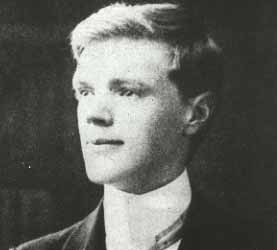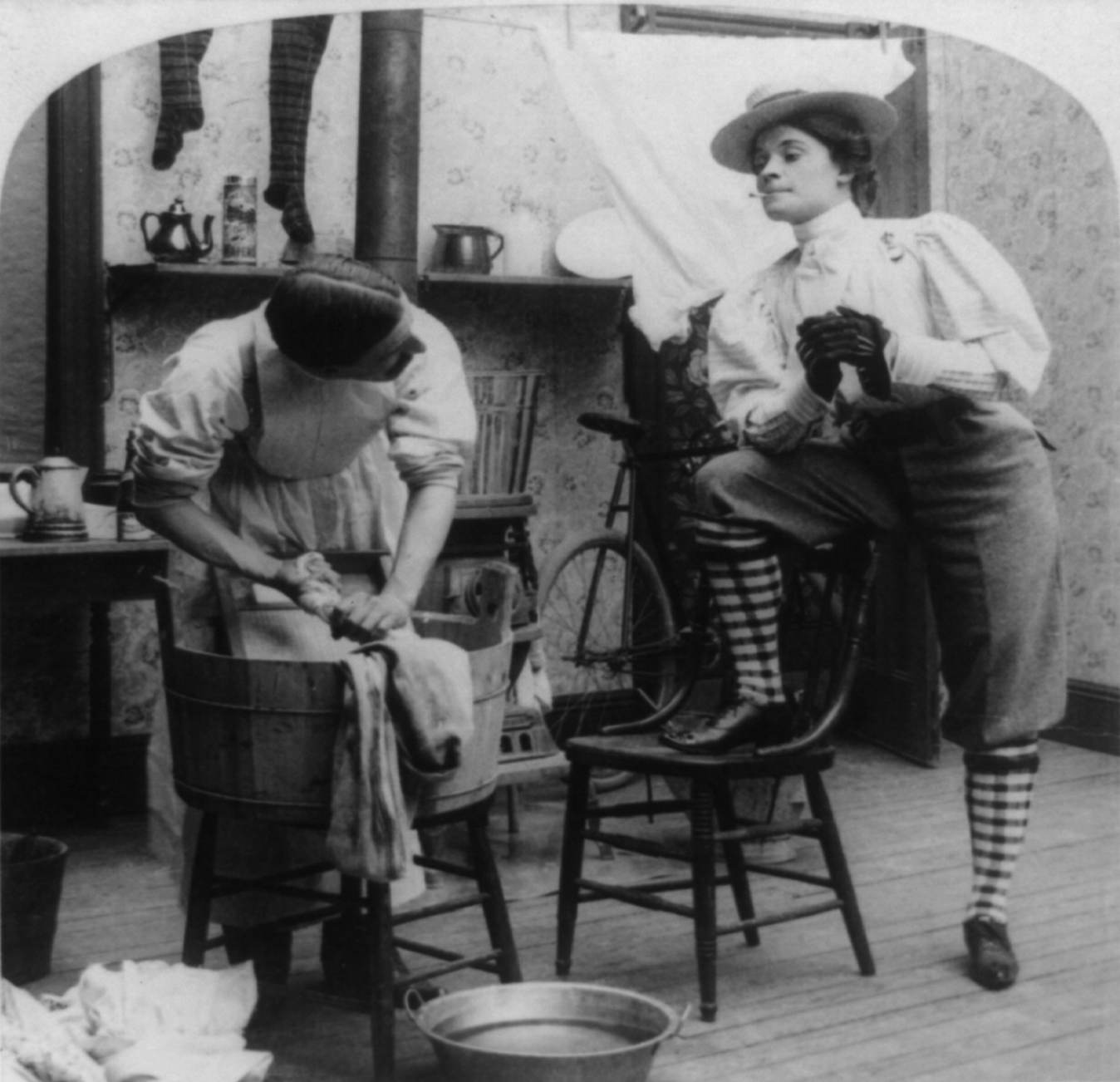Just after Lawrence’s death came one of the first books about him, a study by Anaïs Nin, who said it was the first time that a man had so wholly and completely expressed women accurately – a huge thing to say. Quite soon after the backlash began, we got Simone de Beauvoir, in The Second Sex, rather movingly describing her distress at realising that she fell for what she called Lawrence’s “cosmic optimism”. She had rather loved some of what seemed to her, initially, like mutual encounters between men and women. She then decided that Lawrence passionately believed in male supremacy. You can really feel the disappointment in her writing as she comes to that conclusion.
Lady Chatterley, woman and sexuality
Professor of Modern Literature and Culture
- D.H. Lawrence evoked strong opposing reactions from women who read his works. Part of what makes women respond so intensely to Lawrence is his modern female characters, some of whom were inspired by his wife, Frieda.
- Lawrence saw the unconscious as a bodily organ that hadn’t had enough free play, and he thought that we became too driven by our will rather than by an ease and instinct. Sex was only one aspect of that.
- As far as Lawrence’s reputation was concerned, the trial of Lady Chatterley’s Lover rightly established him as a crucial figure in shaping modern attitudes to sex.
D.H. Lawrence, the ostracised figure
While Lawrence was alive, he provoked extremely strong reactions amongst women readers, both women he knew and women who read him. This has carried on, for more than almost any other male writer, right through the decades until today.

DH Lawrence at 21 years old. Wikimedia Commons. Public Domain.
De Beauvoir was followed by more certain pronouncements of Kate Millett in her 1970 book Sexual Politics, where she castigated Lawrence for what she calls his personal cult, ‘The Mystery of the Phallus’. In the wake of Millett’s book, Lawrence is torn from university syllabuses. It was increasingly hard for women to admire Lawrence. He became someone to be ashamed of liking, although he himself would disapprove of us feeling ashamed of anything. He became quite an ostracised figure.
White-hot and glowing
There were still prominent feminist writers who came out and loved Lawrence. We get Doris Lessing, who’d been seduced by him in adolescence and remained loyal to him into her old age. She said he was fiery and lambent; flickering, white-hot and glowing. We also get Angela Carter, whose take might, in some ways, be more helpful for us now. She called him a drag queen and got very into his enjoyment of female clothes and of the female gaze. So, these two reactions of love and hate have really seen him through the decades. I think this isn’t just feminism responding to Lawrence; it’s also feminism learning from Lawrence. These are women who’ve got a lot out of having a man to argue with. In many ways, Lawrence is the perfect sparring partner, partly because he argues with himself so much.
Modern women
Part of what makes women respond so intensely to Lawrence is his female characters. In The Rainbow and Women in Love, Lawrence created the Brangwen sisters, Ursula and Gudrun, who for me are some of fiction’s first and most fully realised modern women. They wear emerald green stockings and silk dresses; they make art in a studio in London and study botany at university. They talk about art and politics and have no interest in marriage or children. Their power is partly that Lawrence was thinking hard about modern womanhood with the model of his own wife, Frieda von Richthofen, who had lived freely as a young woman in Germany before marrying and moving to Nottingham. She left her husband for Lawrence, partly because she believed in free love. She was part of a generation rethinking what being a woman meant, and Lawrence was fascinated by Frieda, as we can see, in Ursula and Gudrun.

Woman in knickers smoking cigarette and looking at man doing laundry. Wikimedia Commons. Public Domain.
He thought that the world was calling for a new form of womanhood and a new liberated sexuality, but he was also very frightened by modern women. Sometimes Frieda was definitely too much for Lawrence in her modernity. We can see that in some of his female characters, who go from bracing challenge to the source of fear for the men. Lawrence’s ambivalence about women goes into these women and then provokes extreme reactions in his female readers because, on the one hand, we’re finding these full portraits of womanhood that we can identify with, but at the same time, we’re feeling his ambivalence and that they’re not quite honoured in some way, that they’re hated as well as loved, which maybe is just a sign of great fiction.
Lawrence, the redeemer of sexual lives?
I think people sometimes see Lawrence as wanting to redeem us in our sexual lives – which was true at moments – but the main thing he wanted to do was to allow bodies to have precedence over minds. He thought that over the centuries, and particularly in England, people had got too caught up in their mental lives. The unconscious, which he saw as a bodily organ, hadn’t had enough free play, and he thought that we became too driven by our will rather than by an ease and instinct. Sex became one aspect of that, and he thought it was an important part of bodily life that needed to not be taken over by the mind or the prudishness and anxiety that came with thinking – but it was only one part of it. His project was more to turn us into instinctive people than necessarily sexually liberated ones.
Millett and Lady Chatterley’s Lover
According to Kate Millett, there’s a straightforward dichotomy between the passive woman and the active man. Millett sees Lady Chatterley as lying back, and Mellors as exerting his masculinity and hating it when she moves or when she wants sexual pleasure for herself. There’s certainly an element of truth in that. If we look at Lawrence’s essays, more than his novels, he talks about phallic consciousness. He talks in his essay about Lady Chatterley about the phallus as the bridge between the male and the female. The necessary connection that’s going to happen with blood is effectively going to be brought about by the male organ.
However, I think it’s much more complex than Millett presents it to be, because of Lawrence’s vision of will. Millett thought that Lawrence was decrying the female will and saying that women should be less wilful, which he was, but I think the point was that he wanted all of us to escape from our wills and to live more instinctively. So, there’s a sense in which he wanted us all to be more passive – and by passive, he meant more lost to our bodies and less wilful and mindful of the experiences we’re trying to bring about.
In the best sexual descriptions, particularly the ones in Women in Love, but also some of those in Lady Chatterley’s Lover, you see his characters almost losing consciousness and escaping their own thoughts and becoming part of a larger life force.
The trial and Lawrence’s reputation
The trial of Lady Chatterley’s Lover in 1960 was tremendously important for establishing Lawrence’s reputation as a proponent of sexual freedom. At that trial, not just a book, but a whole nation’s bodily life seemed to be on trial. As far as Lawrence’s reputation was concerned, I think it rightly established him as a crucial figure in shaping modern attitudes to sex. It also gave a very crude account of the novel and its vision, which has made it much easier for his message to be simplified. In some cases, that trial led directly to the backlash of the 1970s, 1980s and 1990s because it oversimplified Lawrence and then enabled people to oversimplify their response.
Lady Chatterley’s Lover

The old stone church in the village of Teversale, Nottinghamshire, that appears in D. H. Lawrence’s novel, Lady Chatterley’s Lover. Photo by Matthew Troke.
Lady Chatterley’s Lover tells the story of a woman, Constance Chatterley, who is married to an upper-class man who’s been injured in the war and has lost the use of his legs, and therefore has also become impotent. It’s the story of her learning to live with a new life, without much life or vitality in a post-war world that seems itself over-industrialised and grey, and of an England that’s losing its life force, in which Connie needs to be rescued. The rescue comes both from nature – it’s set in spring and it shows her coming out of the dark house, engaging with the hatching chicks in the woods and the flowers that are emerging – and, at the same time, from Mellors, the gamekeeper, who himself is a man very wounded by experience and rather frightened of his own bodily desire. Together, they connect and overcome their fears and learn to live instinctively. What the trial became about was a series of sex scenes in which they go from uncertain connection to an ecstatic owning of the life force which they feel free-flowing between them.
Insights from female characters
I think this is a moment when we’ve processed the best insights of Lawrence’s female antagonists and freed ourselves to engage with him as women. In the book that I’m writing about Lawrence at the moment, I take him on as an ambivalent guide to modernity, using him as an interlocutor, as I think through where we are now in relation not just to sex and gender, but to ideas of community, religion, nature and apocalypse.
Several of the women writers I most admire have taken on Lawrence recently, often in exuberant, very creative ways and often with some madness thrown in. There’s Rachel Cusk’s new novel Second Place, which is about a woman in contemporary Britain receiving a death-dealing visit from an artist known as L, modelled on Lawrence. There’s Alison MacLeod’s new novel Tenderness, which takes the trial of Lady Chatterley’s Lover as its starting point in a huge and ambitious investigation of the place of tenderness and the bodily life in the modern world. There’s Frances Wilson’s new biography of Lawrence, Burning Man, which reads Lawrence as living a Dantean quest. I think we can see Lawrence not just as present in these particular takes, but in auto-fiction in general. It’s a genre that’s very important to feminism now, and I think we need to see him as one of its antecedents.
Discover more about
womanhood and sexuality
Lawrence, DH. (1928). Lady Chatterley's Lover. Penguin.
Feigel, L. (2018). Free Woman: Life, Liberation and Doris Lessing. Bloomsbury Publishing.
Wilson, F. (2021). Burning Man: The Trials of D.H. Lawrence. Farrar, Straus and Giroux.
Cusk, R. (2021). Second Place. Farrar, Straus and Giroux.